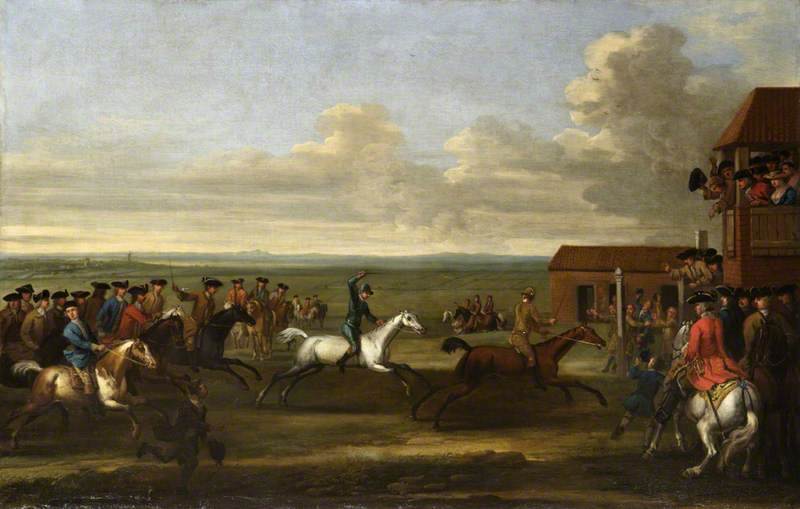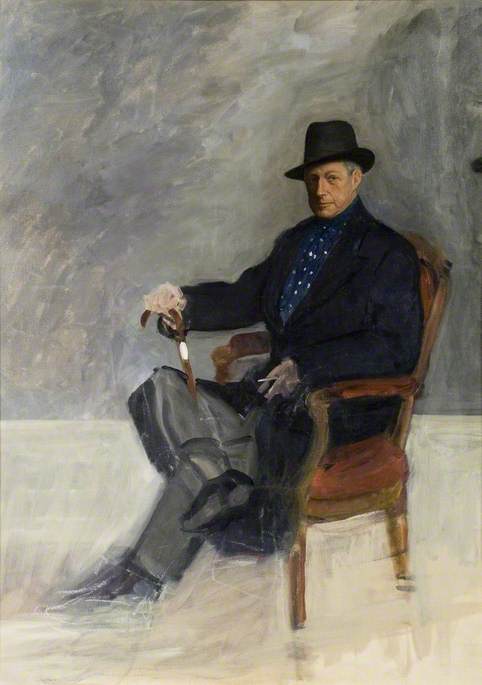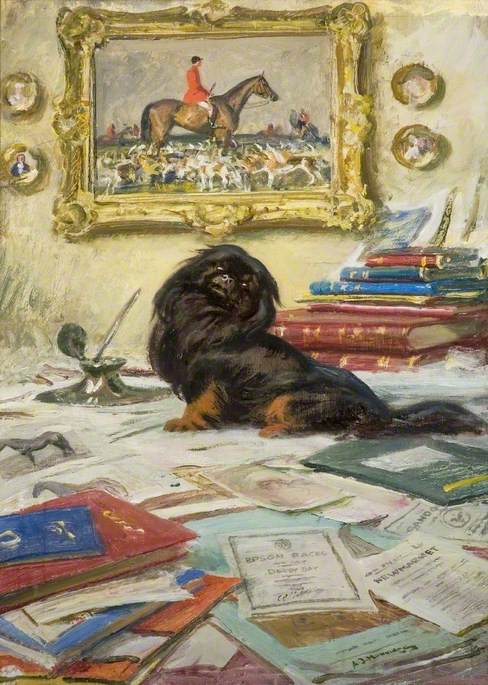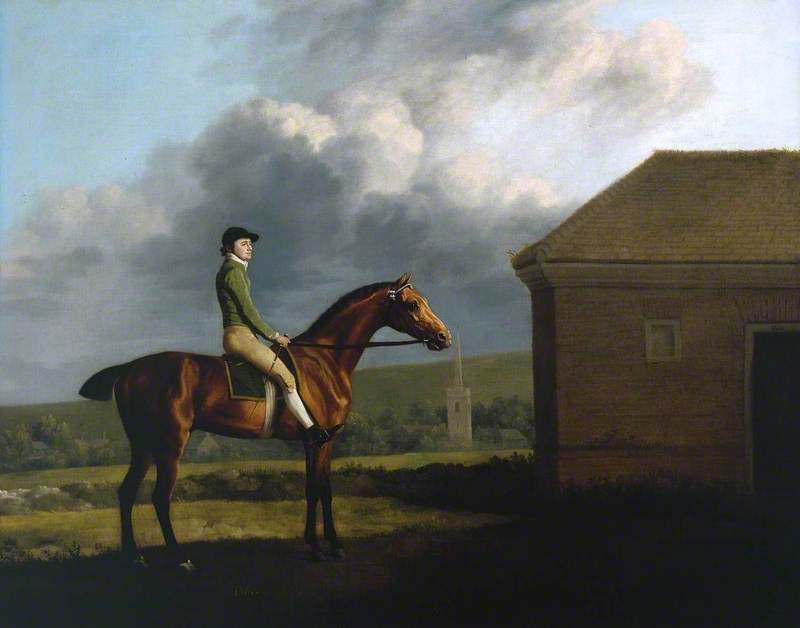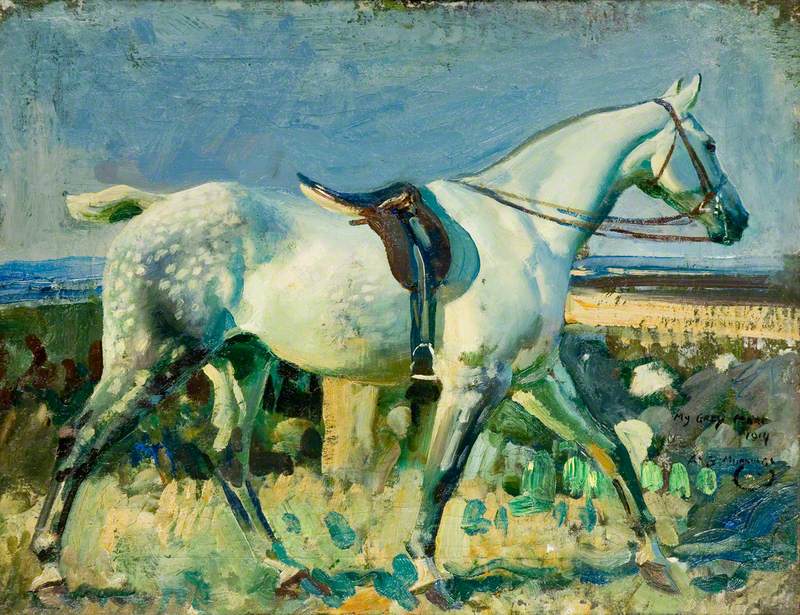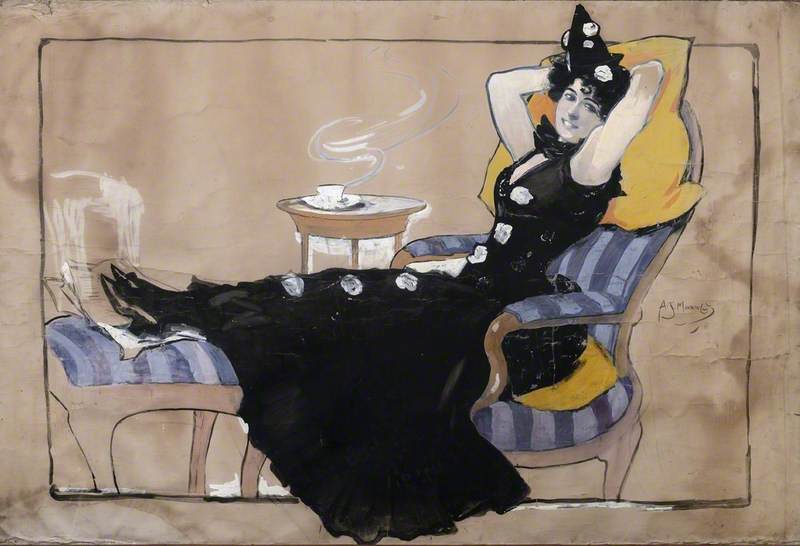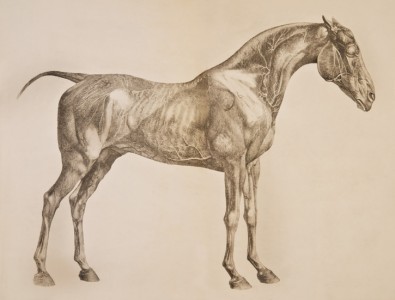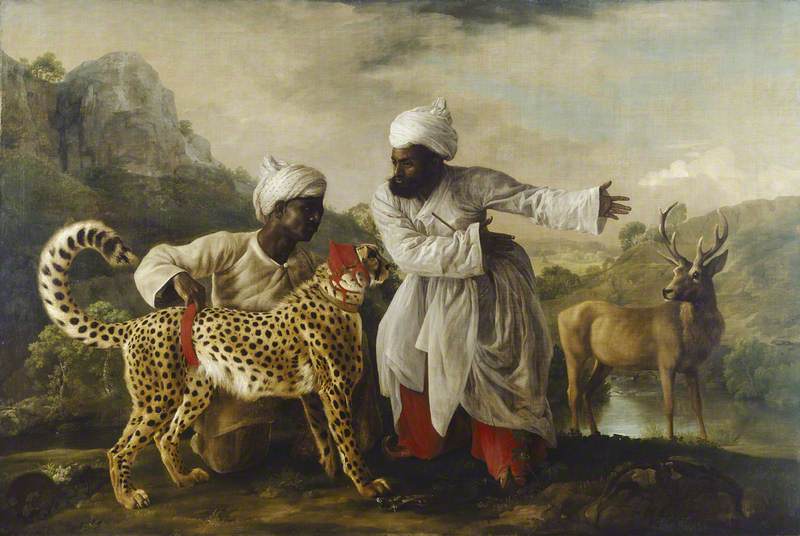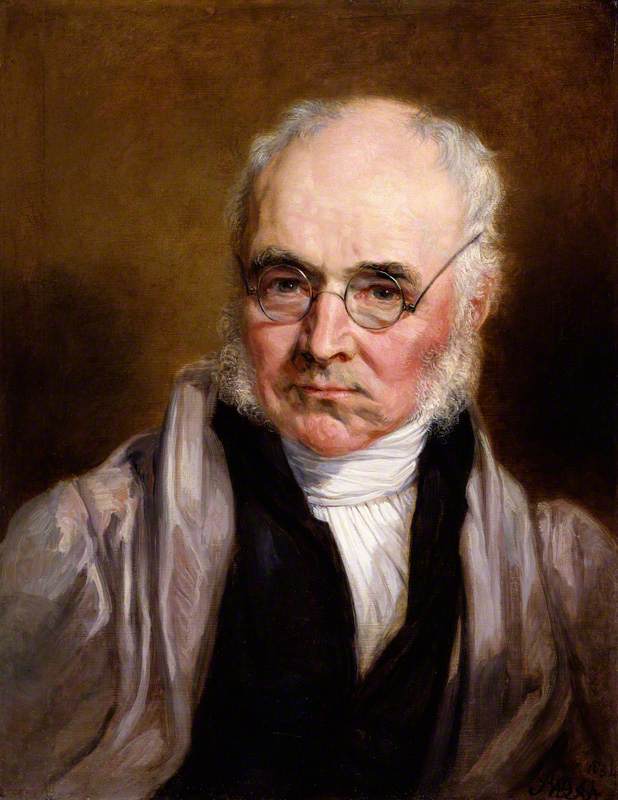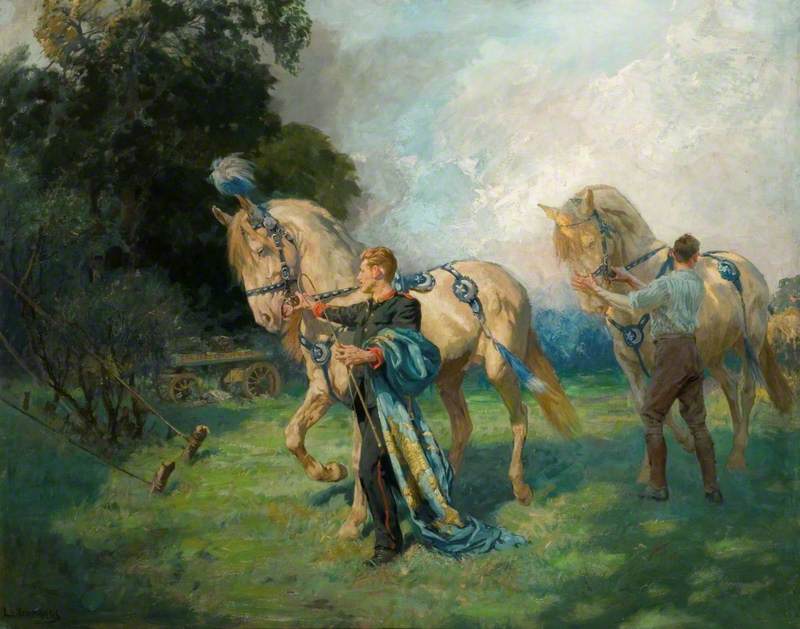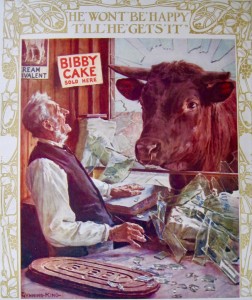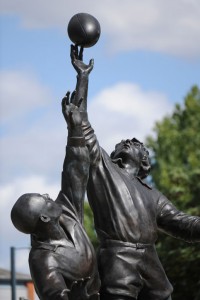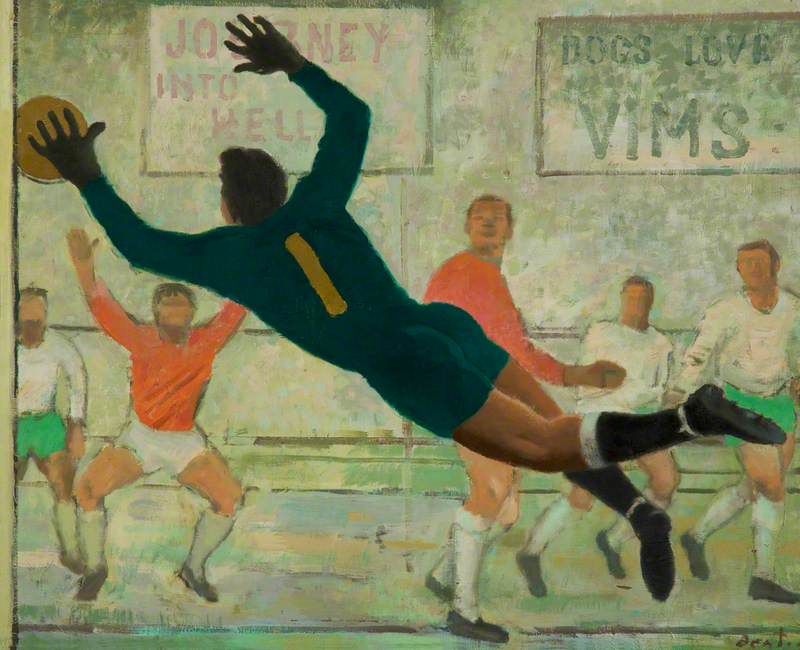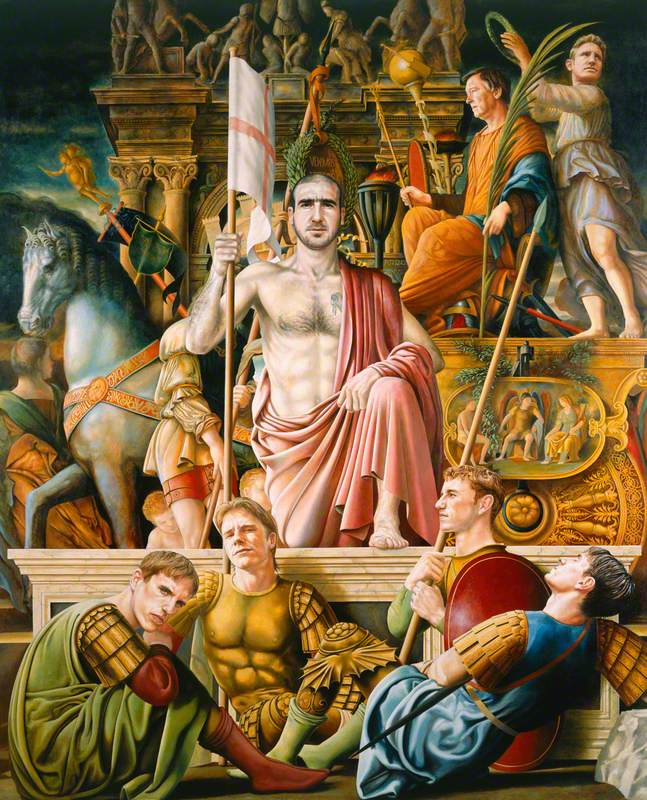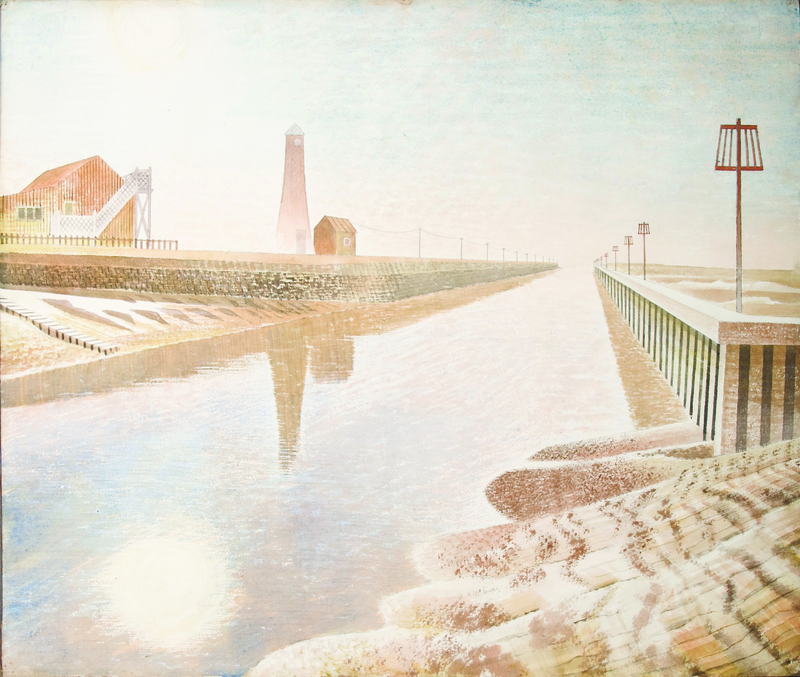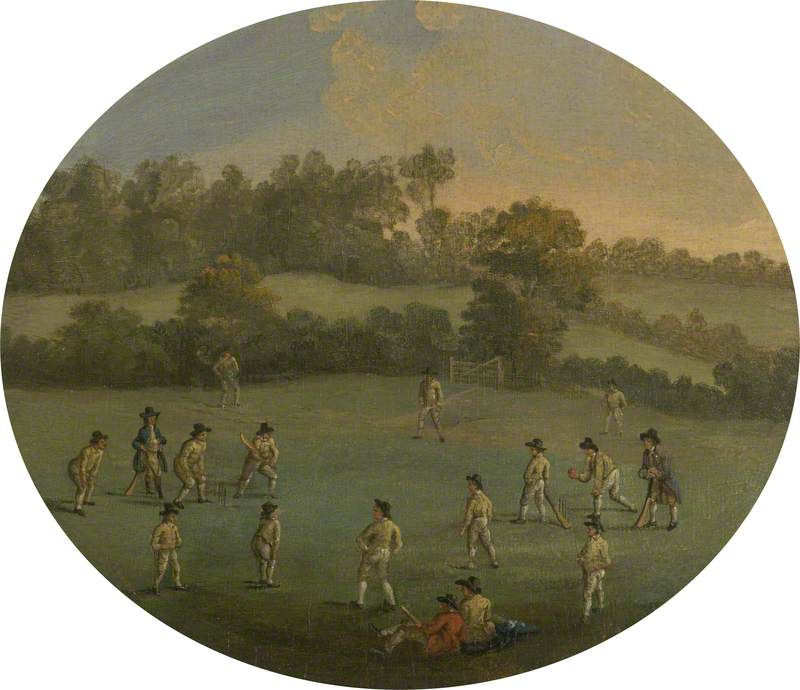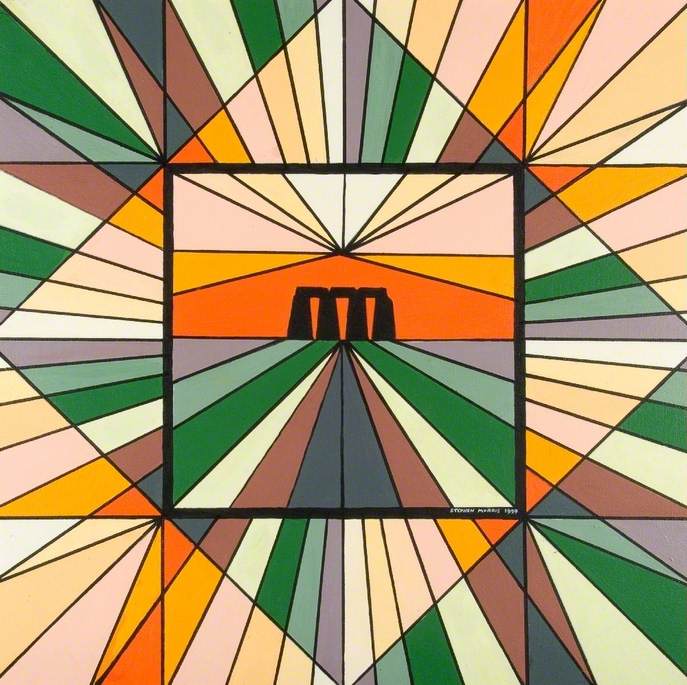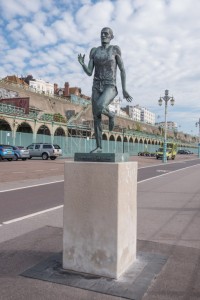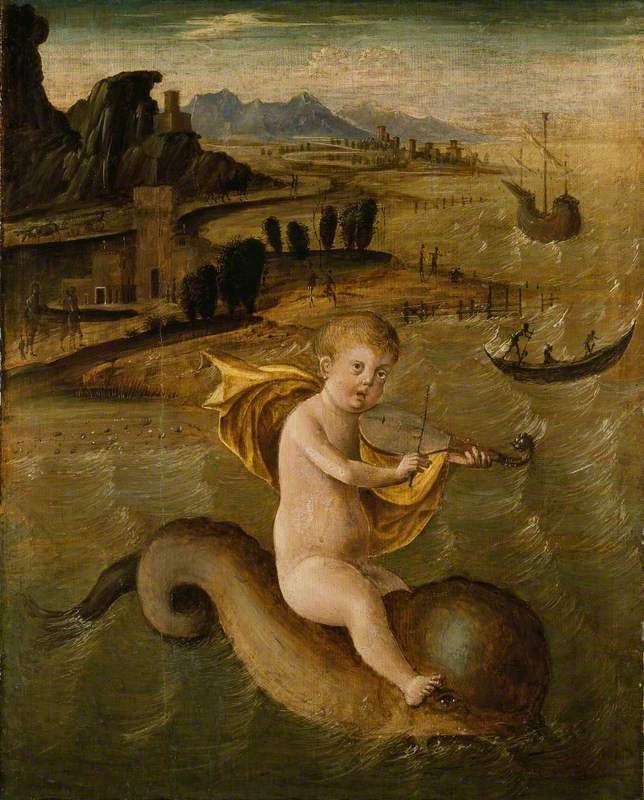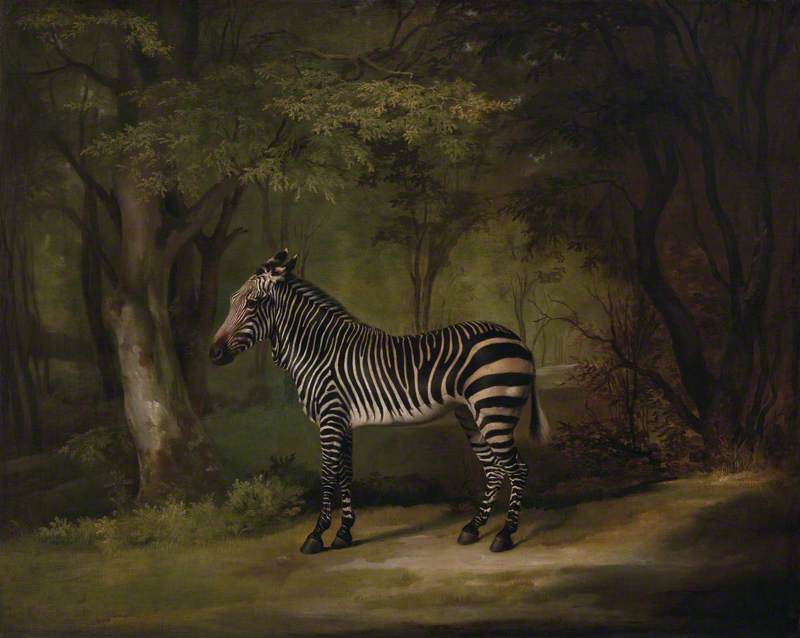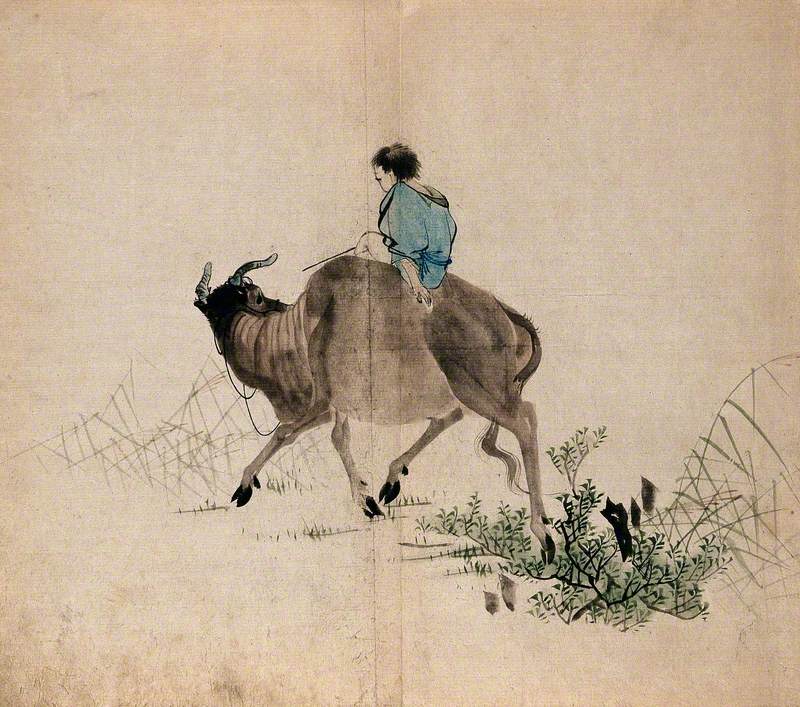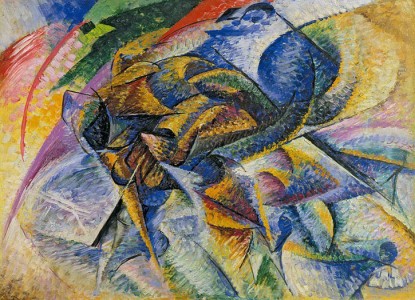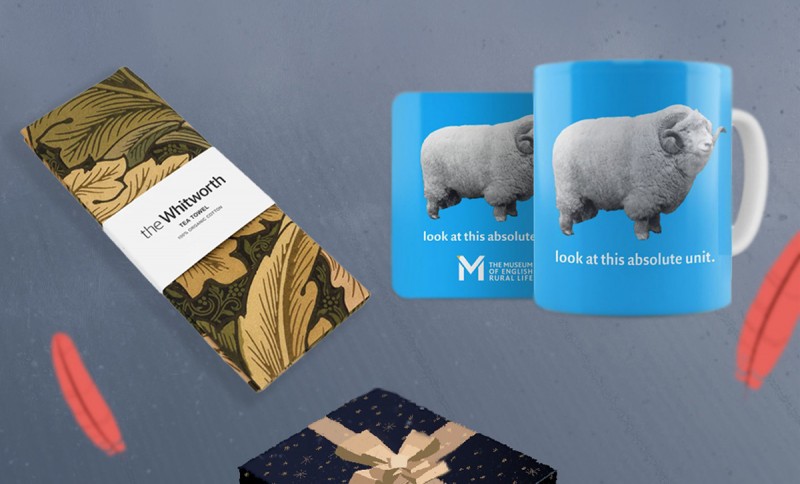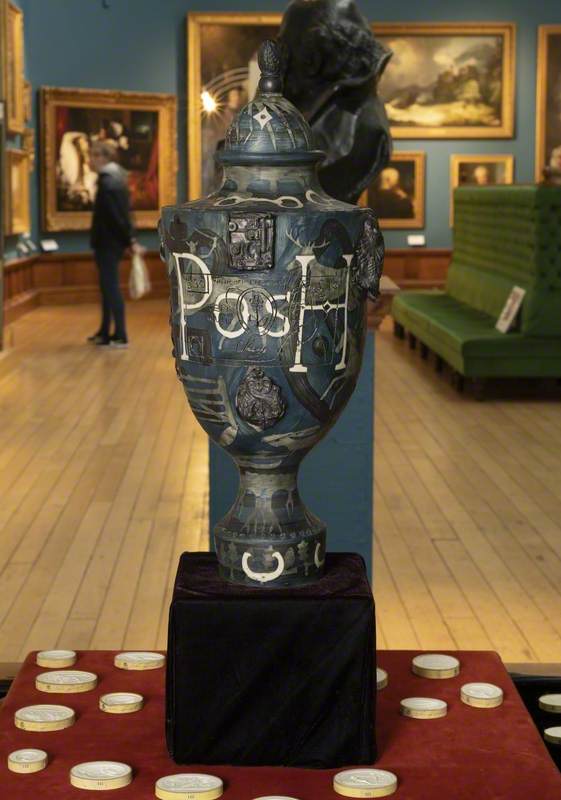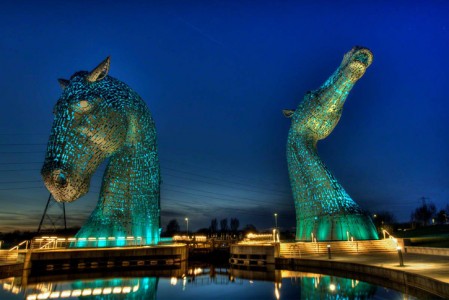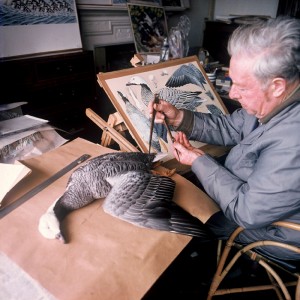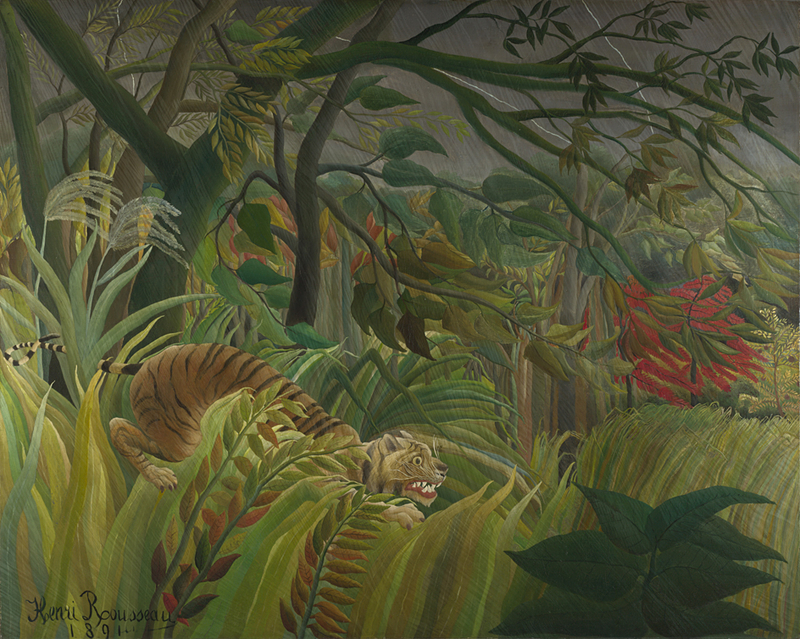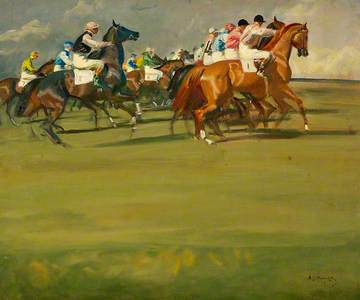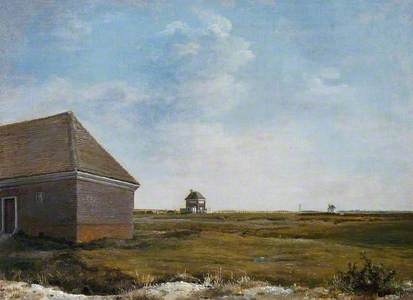While spring has clearly arrived in the UK we are restricted from enjoying it, confined and isolated as we are by the coronavirus. Parks are sparsely populated, high streets empty and, for a nation of sports lovers, stadiums and racecourses stand silent. Thankfully, Art UK provides us with an alternative means of enjoying nature and sporting life through art held in the nation's public collections.
Palace House in Newmarket displays the collections of the British Sporting Art Trust and the National Horse Racing Museum in what remains of Charles II's Newmarket Palace and stables. These were a place of refuge for the King, from the strict protocols and demands of life at court in London, and he spent many hours outdoors riding and enjoying the sport of horse racing, then in its infancy. With the gradual inclines of Warren Heath and the flat turf of the Rowley Mile, the land around Newmarket was perfect for training and racing and is still used for this purpose today.
Among their extensive collections, Palace House holds a number of examples of the work of Sir Alfred Munnings (1878–1959) who, in the rush of urbanisation and industrialisation surrounding the First World War, devoted his career to capturing the essence of rural Britain.
His palette and brushwork influenced by Impressionism, a preference for painting en plein air and his experience as a horseman meant he was particularly suited to capturing on canvas sporting pursuits of this period. Paintings, Munnings said, should 'fill a man's soul with admiration and sheer joy, not to bewilder and daze him' and his canvases are infused with the beauty and admiration he felt for the horse.
Sir Alfred Munnings at the start of a race
c.1950, unknown photographer 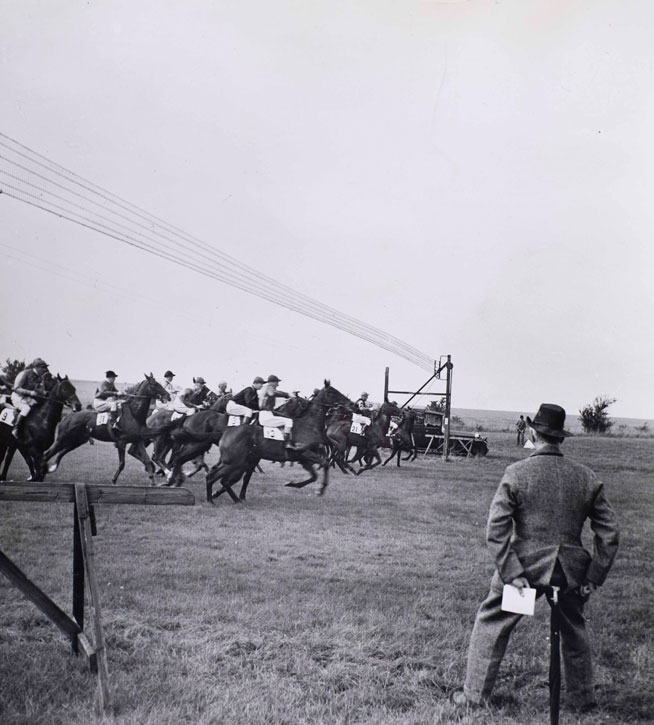
The world of horse racing fired Munnings' artistic imagination and he had a lifelong love of Newmarket. He liked to position himself at the start on the famous Rowley Mile Course and the collections have several examples of studies he made there showing the jockeys in their colourful silks jostling for position in the days before mechanical starting gates.
Moving up for the Start: Under Starter's Orders, Newmarket
Alfred James Munnings (1878–1959) 
Moving up for the Start: Under Starters Orders, Newmarket is a closely observed study of the horses he admired so much with their nervous energy as they gather for the start of the race. Munnings' bravura brushstrokes are infinitely suited to capturing these moments of tension as the horses rock back on their hind legs before launching forward into their gallop stride, as in Under Starters Orders.
Study for 'Under Starter's Orders, Newmarket'
Alfred James Munnings (1878–1959) 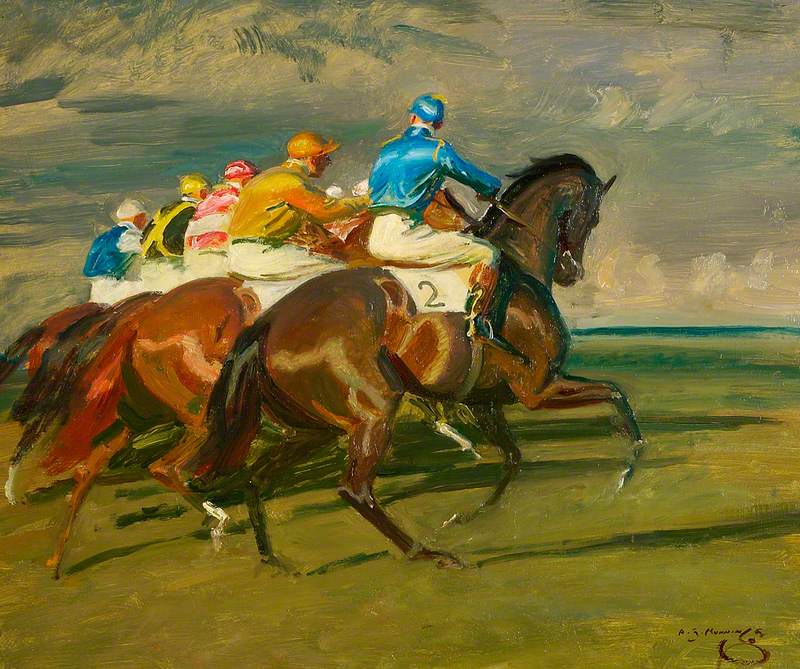
Newmarket was close to Munnings' home at Castle House in Dedham, which is now The Munnings Art Museum. He and his wife Violet were regular attendees on race days and in later years they were always accompanied by their pet Pekingese, Black Knight, who gained much media attention for picking winners by barking at a particular horse as they gathered for the start.
He selected 'Aureole', winner of the 1954 Coronation Cup at Epsom and fittingly owned by the newly crowned Elizabeth II. Black Knight's exploits were recorded by Violet and published as Black Knight: Diary of a Freeman, with Munnings supplying the cover page and illustrations.
He famously accompanied Violet to places usually forbidden for dogs in a specially made bag with a window so he could look out. He was a favourite of the Royal family who would stop and say hello when he attended events such as a dinner for George VI and the Queen at the Royal Academy, and the wedding of Princess Elizabeth to Philip Mountbatten.
While painting in Newmarket Munnings used Southfields rubbing house as his studio. This was one of four such buildings on the Heath used to cool horses down after a race and prepare them for their next. In the eighteenth century, it was usual for horses to run up to three races in a single day and those in Newmarket were twice painted by George Stubbs in around 1765. Both versions were kept in his studio until his death and informed later compositions such as Otho, with John Larkin up.
The Tate version is on display at Palace House.
The other, showing the rubbing house at the end of the Beacon course, is in the collection of the Yale Center for British Art in New Haven, Connecticut.
Newmarket Heath, with the King's Stables Rubbing House at the Finish of the Beacon Course
c.1765
George Stubbs (1724–1806) 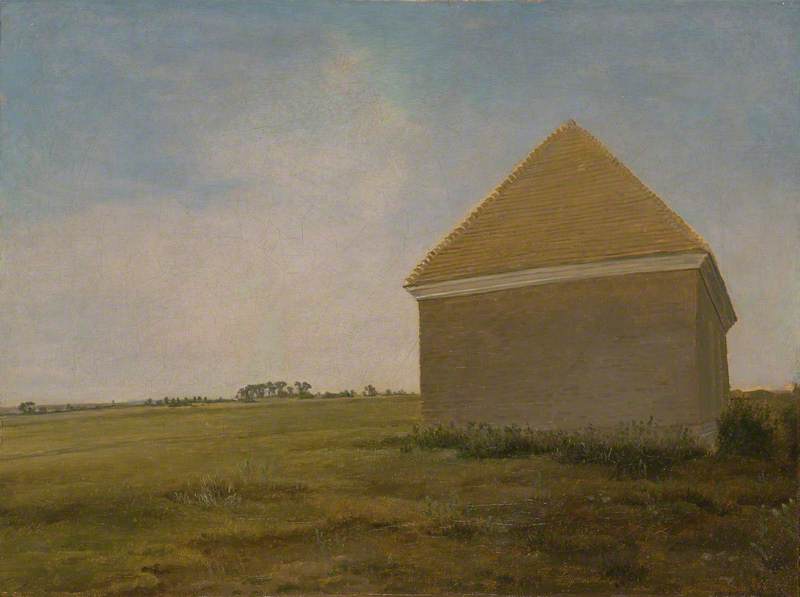
The surviving Newmarket rubbing house is currently the focus of efforts by the Jockey Club to save this important building in the history of horse racing.
Spring heralds the major meetings of the jump racing season, the Cheltenham Gold Cup and the Grand National at Aintree.
The 2020 Gold Cup was mired in controversy as one of the last large-scale gathering of sporting enthusiasts in the UK before the government's directive for self-isolation. Munnings captured the scene in happier times in his Study for the Saddling Paddock, Cheltenham, March Meeting.
Study for 'The Saddling Paddock, Cheltenham March Meeting'
c.1947
Alfred James Munnings (1878–1959) 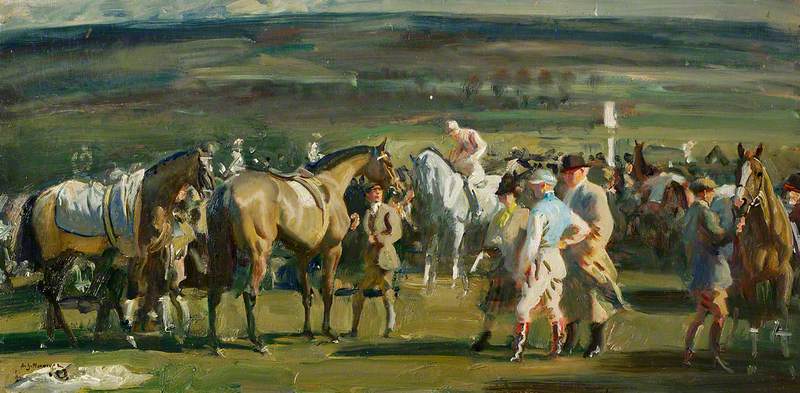
The Grand National takes place several weeks after Cheltenham but the 2020 race was cancelled. The 78th running in 1919, the first since the end of the First World War, suffered a brief but fierce snowstorm just before the race. It was won by 'Poethlyn', who had been purchased for £50 by his owner Mrs Hugh Peel and thus relinquished from his job of pulling a milk cart! He was ridden by Ernest Piggott, grandfather of one of the sport's greatest ever jockeys, Lester Piggott.
Saddling Up for the Grand National, 1919: Before the Snowstorm
1919
Alfred James Munnings (1878–1959) 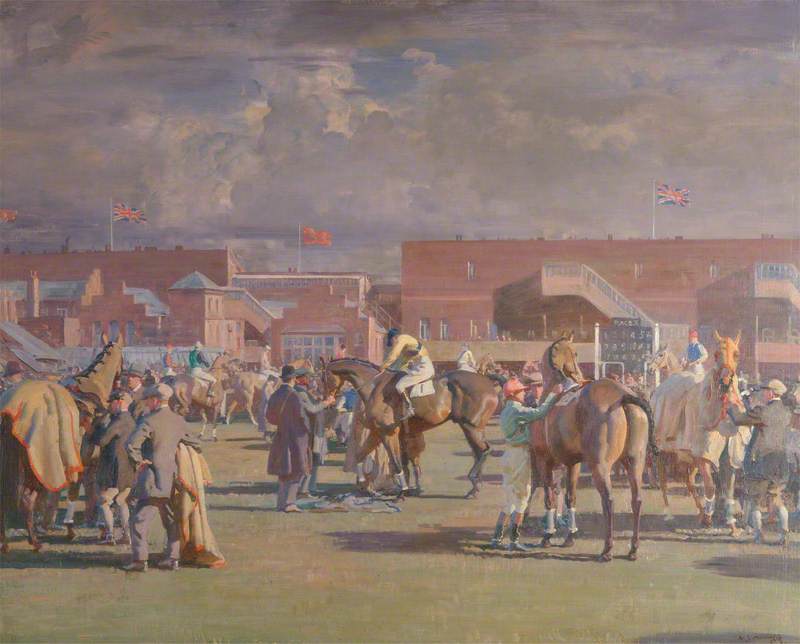
Munnings painted Saddling Up for the Grand National, 1919: Before the Snowstorm which was bought by Paul Mellon and is now in the Yale Center for British Art.
While the immediate future of horse racing and sport, in general, remains uncertain we can still live out these races of the past through Munnings' great works found in the collections of Palace House, The Munnings Art Gallery, Yale Center for British Art and many others.
Katherine Field, Packard Curator at Palace House in Newmarket, home of the National Horse Racing Museum and the collection of the British Sporting Art Trust
